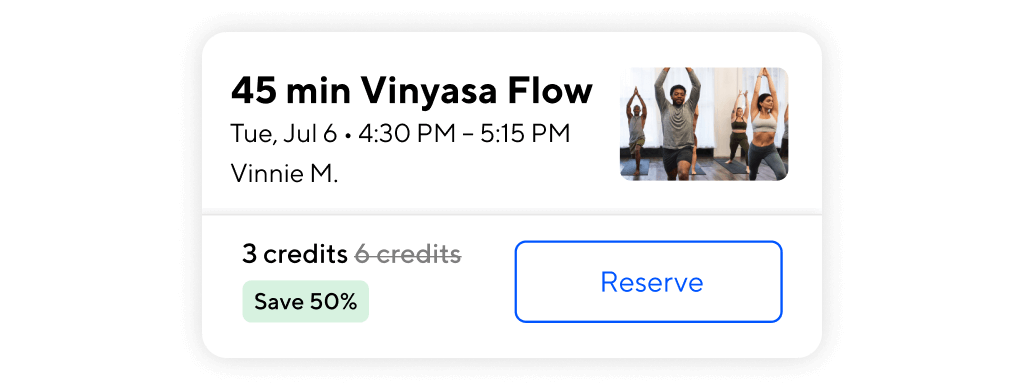How to use your credits
Here’s how some ClassPass members use their credits to create a routine that works for them.
How to use your credits
Here’s how some ClassPass members use their credits to create a routine that works for them.
Prioritizing your safety during COVID-19
Our partners are implementing new guidelines to protect your health and safety like reducing class sizes and frequently cleaning equipment. Learn more information about partner safety & cleanliness directly in the app.
![[GLOBAL] COVID Product UI [GLOBAL] COVID Product UI](http://images.ctfassets.net/ew96z4wsnz93/47Grd3N9vruWy0fJfh8gGQ/870241b440fc287fbd6ae0e3bfe550d7/Frame_2284__2___1_.png)
Start a risk-free trial
![[GLOBAL] Auto-renewal Reminder - no BG [GLOBAL] Auto-renewal Reminder - no BG](http://images.ctfassets.net/ew96z4wsnz93/1mZKIKEPBzfWJOmhVPIr9z/d2e229c72c742a70e6f0a7bc7d905077/CRO_Start-A-Risk-Free-Trial-Graphic.png)
Working out is hard — we’re not about to make it harder. That’s why starting with ClassPass is free. We’ll remind you 2 days before your trial ends so you can make changes or cancel if it’s not your thing.

Unlock access to everything with a monthly subscription
No restrictions
Every paid membership unlocks access to each fitness studio, gym, salon & spa on our app
No visit limits
Love a studio, salon or spa? Book at your faves as often as you want
No contracts or commitments
Memberships are month-to-month and we make changing your plan easy
No extra steps
Use one app to book everything, no additional sign ups, log ins or check in steps required
